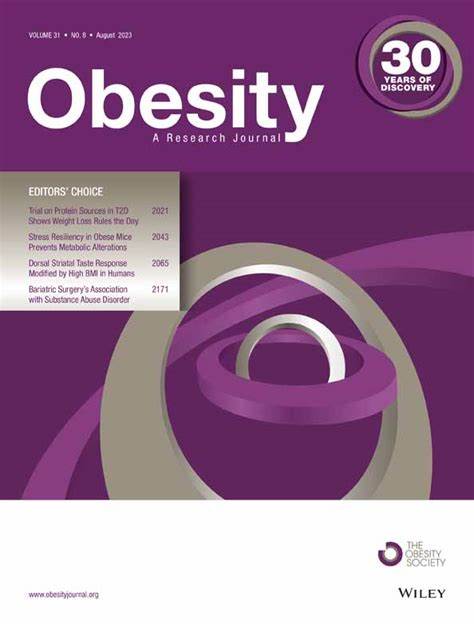Disruption of Ephb1 causes reduced hypothalamic CRH and TRH expression and obesity in mice
Abstract
Objective
Ephrin type-B receptor 1 (EphB1) is a receptor tyrosine kinase involved in axon guidance, synaptic plasticity, and tumorigenesis. However, the role of EphB1 in metabolic regulation and obesity remains poorly understood. This study aims to uncover the role of EphB1 in energy metabolism and provide insights into the underlying mechanisms by which EphB1 regulates obesity.
Methods
Two Ephb1 mutations identified from a forward genetic screen for obesity-related loci in mice were examined for their effects in gene expression, energy metabolism, and endocrine changes. The impacts of EphB1 on neuropeptide expression and signal transduction were evaluated in both hypothalamic tissues and primary cells. Potential downstream signals were modified in Ephb1 mutants to verify the interaction.
Results
Ephb1 mutants develop obesity in adolescence and develop impaired glucose tolerance during adulthood. EphB1 deficiency caused lower body temperature, blunted cold-induced thermogenesis, and decreased locomotor activity, but it did not alter food intake. EphB1 promotes cyclic AMP-responsive element-binding protein (CREB) phosphorylation via phosphatidylinositol 3-kinase (PI3K)/protein kinase B (AKT) signaling in a cell-autonomous manner. EphB1 deficiency leads to reduced expression of corticotropin-releasing hormone (CRH) and thyrotropin-releasing hormone (TRH) in the brain. Intraventricular administration of either TRH or a CRH fragment suppressed obesity in Ephb1 mutants.
Conclusions
EphB1 regulates hypothalamic CRH and TRH expression and promotes energy expenditure in mice.

 求助内容:
求助内容: 应助结果提醒方式:
应助结果提醒方式:


